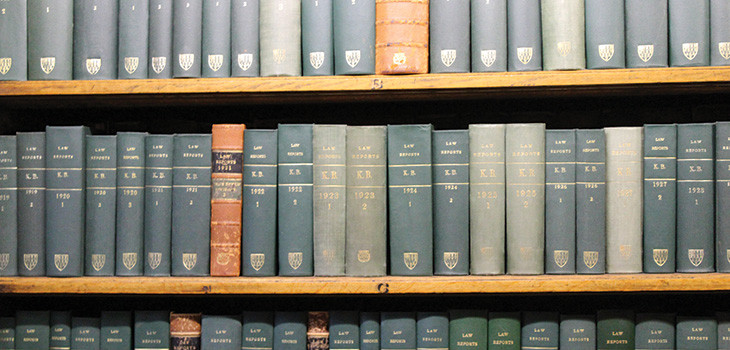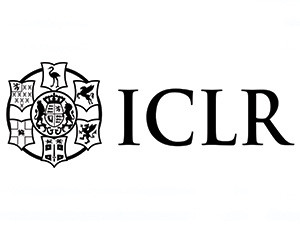*/

Giovanni D’Avola explores the issue of over-citation of unreported cases and the ‘added value’ elements of a law report
For over a quarter of a century the senior judiciary through a series of practice directions (issued by successive Masters of the Rolls and Lords Chief Justices) have imposed a hierarchy on the citation of authority by parties to litigation. The most recent (Practice Direction (Citation of Authorities) [2012] 1 WLR 780) in particular stresses that although a transcript of an ‘unreported’ judgment, that is a judgment which has not been reported in any series of law reports, may be cited, such cases should not ordinarily be cited unless they contain ‘a relevant statement of legal principle not found in reported authority’.
Although access to unreported judgments has increased exponentially in this time, first through the auspices of Bailli and latterly through the National Archives, the Practice Direction that remains in place has been incorporated by reference into the Civil Procedure Rules and the latest versions of the Chancery and King’s Bench Division Guides, and has been the subject of judicial comment reminding practitioners of the need to cite cases featuring in a series of law reports where possible and hinting that a failure to do so and burdening the court with excessive citation of inappropriate unreported authorities may lead to adverse costs consequences (see Keystone Healthcare Ltd v Parr [2019] 4 WLR 99).
This article will seek, briefly, to explore the ‘added value’ elements of a law report, its anatomy if you like, which make a law report superior to a raw judgment transcript and justify this continued preferred status.
First, the very fact that a case has been selected to be reported in a series of law reports means that, by definition, the case has been assessed by a legally qualified reporter or editor (a barrister, solicitor, or a person holding a senior court’s qualification within the meaning of s 71 of the Courts and Legal Services Act 1990) as deciding some point or question of law or procedure of precedential value.
Second, the addition of catchwords enables the reader to see instantly what the case is about and to help identify whether it might be relevant to the particular legal problem being considered. In general, these begin with high level subject matter headings, before descending into the specifics of the case giving a brief outline of the facts, the questions of law or procedure which fell to be determined and setting out any statutory material (domestic or international) relevant to the points determined.
Third, the headnote. A properly crafted headnote will not necessarily summarise every point considered and determined in the judgment, but rather will set out the ratio of each ‘reportable’ point of law in a clear, concise, accurate format along with the parts of the factual background necessary to support and make sense of the conclusions reached by the court. Thus, the headnote informs the reader exactly what the case is about and enables them to see exactly how it relates to the current legal problem in advance of reading the judgment in full. Details of any treatment given to earlier authorities by the court are included to document how the case advances the common law.
Fourth, a list of cases referred to in the judgment, and depending upon the series of reports, those cited in argument is included in a single convenient place. Increasingly, when viewing law reports through an online database, these will be hyperlinked to enable the reader to delve deeper into the surrounding authorities.
Fifth, a section setting out the procedural history of the case is included, to further enhance the readers’ understanding of the case and give a 360 degree view of the proceedings as a whole.
Finally, a case reported in the official Law Reports published by the Incorporated Council of Law Reporting for England and Wales, save in a very small number of cases, contains a summary of the oral argument advanced by counsel during the hearing. Thus the reader is given an insight into the decision-making process of the court and is able to see those arguments which were advanced but rejected and those that were not advanced, but might have been.
So, although, no doubt, the wider availability of judgments has the potential to enhance open justice, the over-citation of unreported cases which do not decide any point or principle of law is not conducive to the orderly, proportionate conduct of research or court proceedings or the orderly development of the common law. For fast, accurate, authoritative, Practice Direction compliant research, law reports remain supreme.


For over a quarter of a century the senior judiciary through a series of practice directions (issued by successive Masters of the Rolls and Lords Chief Justices) have imposed a hierarchy on the citation of authority by parties to litigation. The most recent (Practice Direction (Citation of Authorities) [2012] 1 WLR 780) in particular stresses that although a transcript of an ‘unreported’ judgment, that is a judgment which has not been reported in any series of law reports, may be cited, such cases should not ordinarily be cited unless they contain ‘a relevant statement of legal principle not found in reported authority’.
Although access to unreported judgments has increased exponentially in this time, first through the auspices of Bailli and latterly through the National Archives, the Practice Direction that remains in place has been incorporated by reference into the Civil Procedure Rules and the latest versions of the Chancery and King’s Bench Division Guides, and has been the subject of judicial comment reminding practitioners of the need to cite cases featuring in a series of law reports where possible and hinting that a failure to do so and burdening the court with excessive citation of inappropriate unreported authorities may lead to adverse costs consequences (see Keystone Healthcare Ltd v Parr [2019] 4 WLR 99).
This article will seek, briefly, to explore the ‘added value’ elements of a law report, its anatomy if you like, which make a law report superior to a raw judgment transcript and justify this continued preferred status.
First, the very fact that a case has been selected to be reported in a series of law reports means that, by definition, the case has been assessed by a legally qualified reporter or editor (a barrister, solicitor, or a person holding a senior court’s qualification within the meaning of s 71 of the Courts and Legal Services Act 1990) as deciding some point or question of law or procedure of precedential value.
Second, the addition of catchwords enables the reader to see instantly what the case is about and to help identify whether it might be relevant to the particular legal problem being considered. In general, these begin with high level subject matter headings, before descending into the specifics of the case giving a brief outline of the facts, the questions of law or procedure which fell to be determined and setting out any statutory material (domestic or international) relevant to the points determined.
Third, the headnote. A properly crafted headnote will not necessarily summarise every point considered and determined in the judgment, but rather will set out the ratio of each ‘reportable’ point of law in a clear, concise, accurate format along with the parts of the factual background necessary to support and make sense of the conclusions reached by the court. Thus, the headnote informs the reader exactly what the case is about and enables them to see exactly how it relates to the current legal problem in advance of reading the judgment in full. Details of any treatment given to earlier authorities by the court are included to document how the case advances the common law.
Fourth, a list of cases referred to in the judgment, and depending upon the series of reports, those cited in argument is included in a single convenient place. Increasingly, when viewing law reports through an online database, these will be hyperlinked to enable the reader to delve deeper into the surrounding authorities.
Fifth, a section setting out the procedural history of the case is included, to further enhance the readers’ understanding of the case and give a 360 degree view of the proceedings as a whole.
Finally, a case reported in the official Law Reports published by the Incorporated Council of Law Reporting for England and Wales, save in a very small number of cases, contains a summary of the oral argument advanced by counsel during the hearing. Thus the reader is given an insight into the decision-making process of the court and is able to see those arguments which were advanced but rejected and those that were not advanced, but might have been.
So, although, no doubt, the wider availability of judgments has the potential to enhance open justice, the over-citation of unreported cases which do not decide any point or principle of law is not conducive to the orderly, proportionate conduct of research or court proceedings or the orderly development of the common law. For fast, accurate, authoritative, Practice Direction compliant research, law reports remain supreme.

Giovanni D’Avola explores the issue of over-citation of unreported cases and the ‘added value’ elements of a law report


Chair of the Bar reflects on 2025
Q&A with criminal barrister Nick Murphy, who moved to New Park Court Chambers on the North Eastern Circuit in search of a better work-life balance
Revolt Cycling in Holborn, London’s first sustainable fitness studio, invites barristers to join the revolution – turning pedal power into clean energy
Rachel Davenport, Co-founder and Director at AlphaBiolabs, reflects on how the company’s Giving Back ethos continues to make a difference to communities across the UK
By Marie Law, Director of Toxicology at AlphaBiolabs
AlphaBiolabs has made a £500 donation to Sean’s Place, a men’s mental health charity based in Sefton, as part of its ongoing Giving Back initiative
Professor Dominic Regan and Seán Jones KC present their best buys for this holiday season
Little has changed since Burns v Burns . Cohabiting couples deserve better than to be left on the blasted heath with the existing witch’s brew for another four decades, argues Christopher Stirling
Six months of court observation at the Old Bailey: APPEAL’s Dr Nisha Waller and Tehreem Sultan report their findings on prosecution practices under joint enterprise
Despite its prevalence, autism spectrum disorder remains poorly understood in the criminal justice system. Does Alex Henry’s joint enterprise conviction expose the need to audit prisons? asks Dr Felicity Gerry KC
With automation now deeply embedded in the Department for Work Pensions, Alexander McColl and Alexa Thompson review what we know, what we don’t and avenues for legal challenge